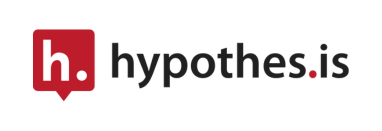
Kristin Polizzotto
Professor of Biological Sciences, CUNY Kingsborough
Elevating engagement and grades through social annotation
At Kingsborough Community College, a cornerstone of the CUNY system and known for its diverse student body, the challenge of maintaining rigorous educational standards while fostering student engagement has never been more pressing.
With Hypothesis, Kingsborough Community College found a path to not only engage students in remote and hybrid modalities but to increase comprehension and academic performance.
Snapshot: Kingsborough Community College
Location: Brooklyn, New York
Course: General biology for first-year students
Setting: Hybrid
Results: Enhanced student engagement, deeper critical thinking, stronger community
Challenge: Promoting student success, without compromises
Kristin Polizzotto, professor of biological sciences, had ambitious goals for her general biology course. She aimed to not just meet but exceed international academic standards, especially challenging given that the course is filled with first-year students still acclimating to college-level rigor.
The COVID-19 pandemic complicated matters. Although her students maintained stable grades during remote learning, Polizzotto suspected these scores were not entirely indicative of their capabilities. Her suspicions were confirmed when in-person exams resumed and average grades plummeted from the usual 68-70% to 50%.
“My students can find information easily enough,” she explains. “The real challenge was in getting them to organize that information mentally and apply it when needed.”
– Kristin Polizzotto, Professor of Biological Sciences, zero-ing in on the real issue.
With many students still learning remotely, Polizzotto grappled with a critical question: how could she maintain academic rigor while enhancing student engagement and understanding in a virtual classroom?
Solution: Promoting engagement and comprehension with Hypothesis
In her quest to bridge the gap between high academic standards and student performance, Kristin Polizzotto discovered Hypothesis. Attracted by its interactive and collaborative annotation features, she undertook a two-week training program to integrate the tool seamlessly into her course.
Polizzotto creatively adapted Hypothesis into her grading system under the umbrella of “Student Choice Assignments.” Students had the autonomy to pick from three distinct tasks: annotating assigned readings, reviewing a list of detailed learning objectives, or engaging in a discussion board where they could propose and discuss potential exam questions.
To avoid confusion, Polizzotto meticulously prepared guidelines and rubrics. She also ensured the assignments were easily accessible, linking them in weekly course folders so students could find them without hassle.
Results:
Increased student engagement
Polizzotto discovered an exceptional level of engagement among her students with the annotation assignments, a phenomenon she believes is largely attributable to the interactive and social features of Hypothesis.
“In witnessing this level of participation, I was faced with two possibilities: either this cohort is the most motivated I’ve ever had, willing to tackle any extra credit challenge regardless of its complexity, or they found real value in the activities,” she states.
Higher grades, Better preparedness for exams
Polizzotto noted a remarkable uptick in A+ grades, attributing her students’ improved performance to the focused reading and preparation that Hypothesis encourages.
“The sheer surge in A+ grades this semester was astonishing,” she recounts. “Typically, I’d spot one or maybe two A+’s, but this term saw nearly half the class achieving this level of excellence.”

Stronger sense of community
Polizzotto also noticed an increase in peer interaction and a strengthening of the class community, which she attributes to Hypothesis’s focus on collaborative learning.
“What truly resonated with me was the emergence of a tight-knit learning community,” Polizzotto reflects. “The students weren’t just leaving comments; they were actively participating in collective knowledge-building.”
Improved critical thinking and autonomy
Polizzotto also identified a significant improvement in her students’ critical thinking skills and a marked sense of autonomy in their educational journey.
“I was genuinely impressed by how these assignments encouraged critical reflections on a range of topics,” she notes. “Within two weeks, the students effectively became the drivers of their own learning, requiring minimal intervention from me beyond grading.”
Polizzotto credits this self-directed learning and critical thought to Hypothesis’s thoughtful design, which supports collaborative work while also fostering individual perspective and independence.
Conclusion:
CUNY Kingsborough’s adoption of Hypothesis in her biology course has been a game-changer, boosting student engagement, academic performance, and community building. Her success serves as a compelling example of how digital tools can enrich learning without sacrificing academic rigor.
Looking ahead, Polizzotto is eager to further refine and expand her use of Hypothesis. The possibilities are numerous, from more targeted assignments to institutional adoption. Her experience stands as a promising sign that with the right strategy, technology can facilitate student success and potentially revolutionize higher education. The challenge now is not whether to implement these practices more broadly, but how soon they can be scaled up.

